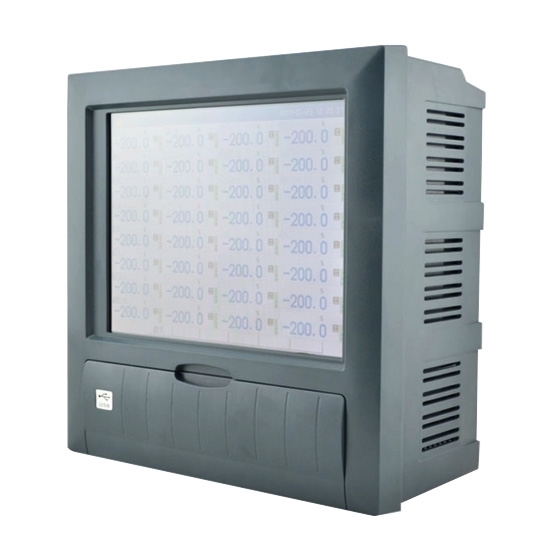
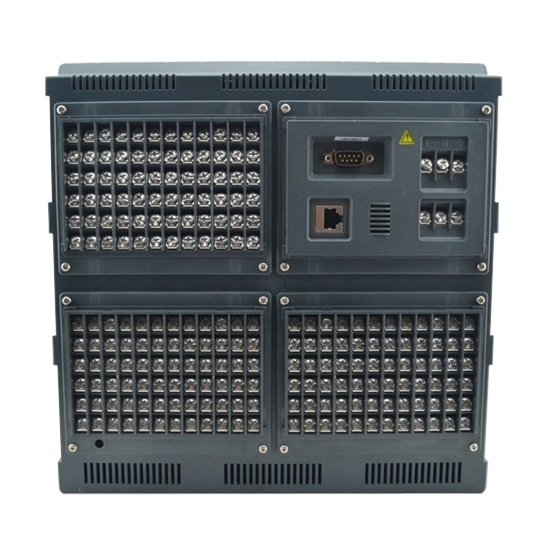
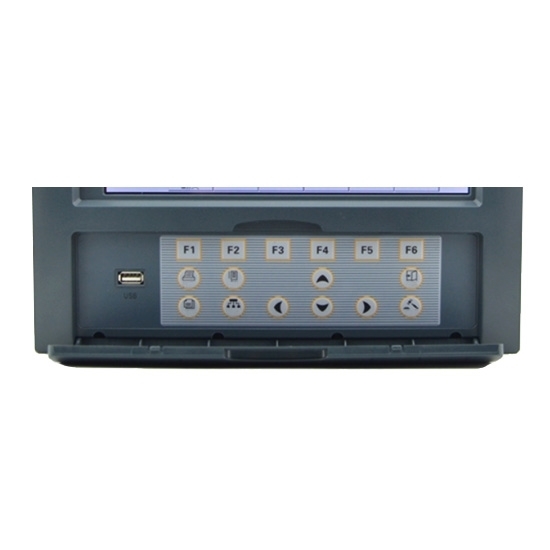
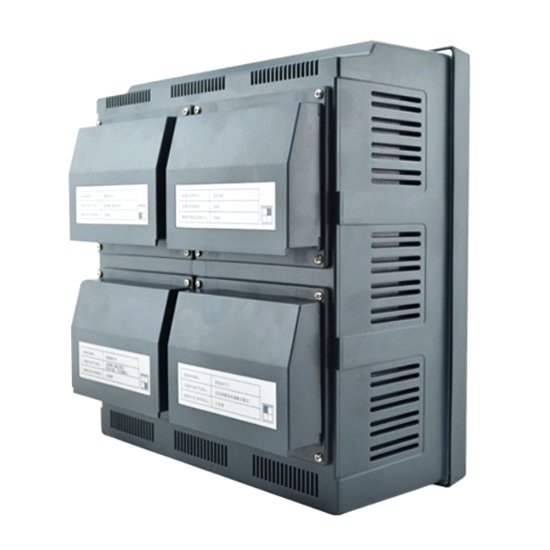
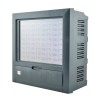
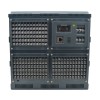
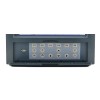
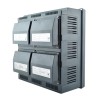
- Stock: In Stock
- Model: RDDLZ-PLR-CH40
- Weight: 1.00
- SKU: RDDLZ-PLR-CH40
Available Options
10.4 inches paperless recorder with optional 8-40 channels, 8 analog outputs, 24 alarm outputs, 18 alarm outputs and RS485/RS232/EtherNet communication output, can achieve temperature/ pressure/ current/ voltage/ linear resistance/ frequency online recording and computation.
Specification:
| Model | RDDLZ-PLR-R8000D |
| Shipping weight | 7kg |
| Dimension (W*H*L) | 288*288*168mm with hole size 282*282mm |
| Packaging included | 1 * Paperless recorder 4 * Mounting bracket 1 * Optical disk (software) 1 * USB flash disk 1 * User manual |
| Display | 10.4 inches TFT color LCD display, 640*480 points, 0~100% adjustment brightness |
| Accuracy | 0.2%FS±1d |
| Power supply | AC 85~265V, 50Hz |
| Power dissipation | ≤20W |
| Internal storage | 256M bytes flash Note: All the data is stored in flash memory to make sure that all historical data and configuration parameters are not lost due to power failure. The real-time clock powered by a lithium battery after power failure. The life of the clock battery is 10 years. |
| External storage | USB flash disk (standard USB2.0 communication interface) |
| Number of Channel * | 8, 12, 16, 24, 32, 40 |
| Input signal * | 1. Current signal: 4-20mA, 0-10mA 2. Voltage signal: 0-5V, 0-10V, 1-5V, 0-20mV, 0-100mV 3. Thermocouple signal: S, B, K, T, E, J, R, N, F1, F2, WRE3-25, WRE5-26 4. RTD signal: Pt100, Cu50, BA1, BA2 5. Linear resistance: 0-350Ω 6. Frequency signal: 0-10000Hz (customizable) |
| Analog output * | Up to 8 analog outputs: 4-20mA (load resistance≤750Ω) Note: When 24 |
| Alarm output * | Up to 24 alarm outputs, relay parameter: NO, 3A / 250VAC |
| Communication output * | 1. RS485: 1200-57600BPS baud rate, Modbus communication protocol, 1km communication distance. 2. RS232: 1200-57600BPS baud rate, Modbus communication protocol, 15m communication distance. 3. EtherNet: 10M communication rate, only used for LAN |
| External power supply * | Up to 8 power supplies: 24VDC, 65mA (for external device) |
| Interface | EtherNet interface, USB interface, RS232 interface |
| Sampling period | 1s |
| Recording interval | 1s, 2s, 5s, 10s, 15s, 30s, 60s, 120s, 240s |
| Storage length | 72 hours/channel (1s interval) ~ 720 days/channel (240s interval) |
| Functions | Different data display forms: Overview Digital Display, Bar Graph, Real-time Curve, Alarm List, History Curve, Report, Print, Backup, Configuration, Computation (flow measurement) |
| Operating temperature | 0~50℃ (32~122℉) |
| Relative humidity | 10~85%RH (No condensation) |
| Warranty | 3 years |
Tips: Application of paperless recorder in the pharmaceutical industry
Sterilization is extremely important in the production of pharmaceuticals, and its purpose is to strive to eliminate microbial contamination and kill microorganisms in pharmaceuticals. Sterilization is an important operation in the production process of drugs, and it is also one of the important measures to ensure the quality of drugs. Sterile medicines, especially sterile preparations such as injections, are drugs that directly enter the blood circulation system of the human body to produce a curative effect, so there are special requirements for its quality, and it must meet the requirements of pharmacopoeia sterility inspection. Therefore, it is extremely important to record parameters such as sterilization time and temperature during the sterilization process. According to the requirements of GMP, the sterilization cabinet for the production of sterile drugs should have automatic monitoring and recording devices, and its capacity should be compatible with the production batch. Each sterilization cycle must be on a sufficiently wide range of time/temperature meters or recording on other equipment with appropriate accuracy. The control instruments, monitoring instruments and record instruments are independent of each other.
To meet the above requirements, the paperless recorder is the best choice. According to install a paperless recorder and designing a new record monitoring network, the following problems in old recording methods can be solved:
- The data retention time is too short.
- Thermal paper is not suitable for long-term storage.
- The operator needs to arrive at the scene to print the recorded data.
- High temperature and humidity environment have a bad effect on the life of instruments on site.
